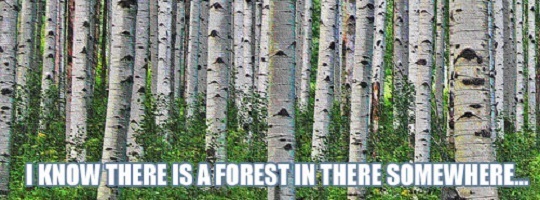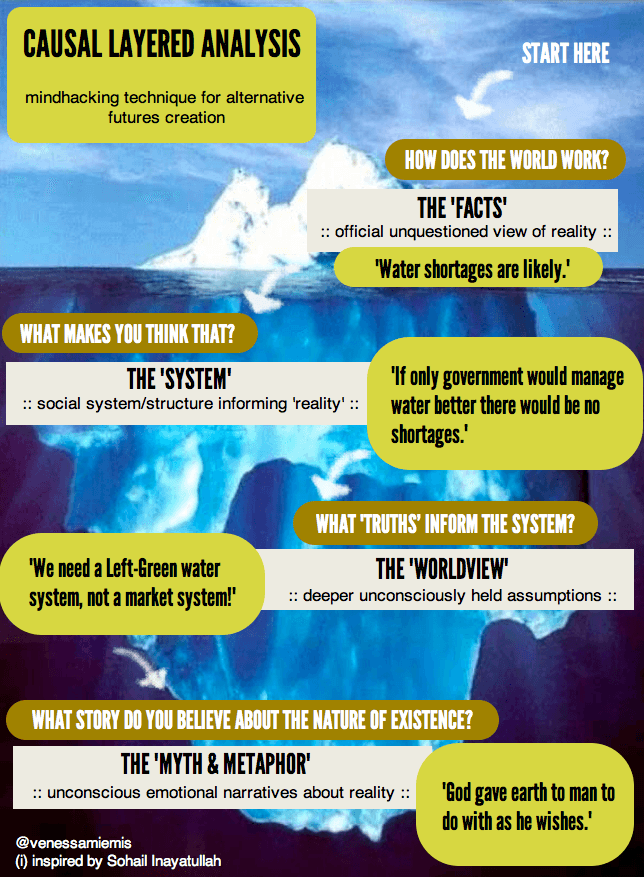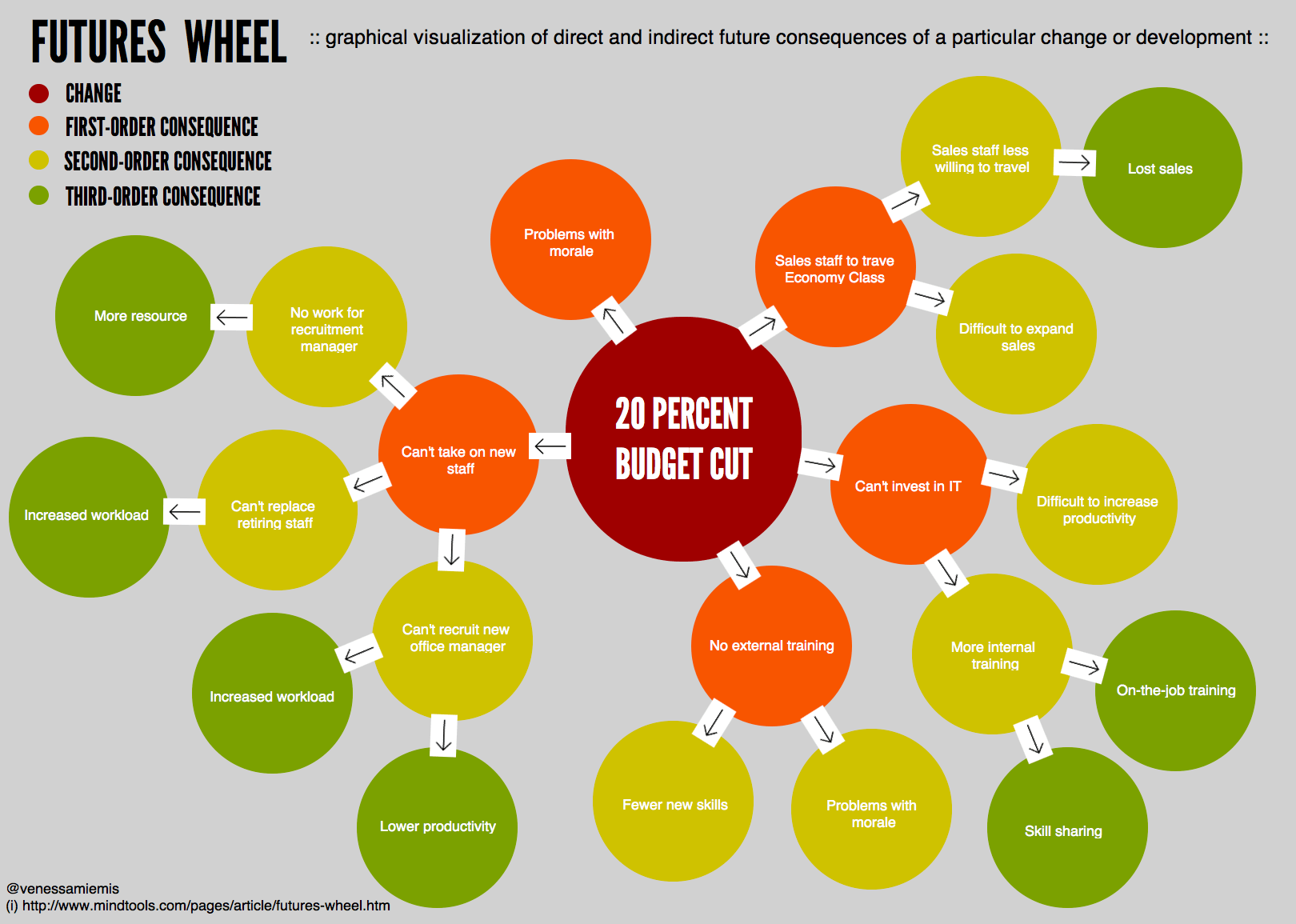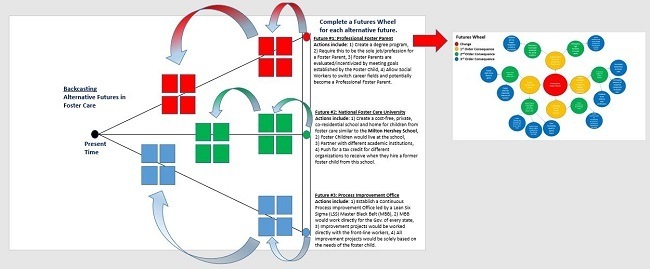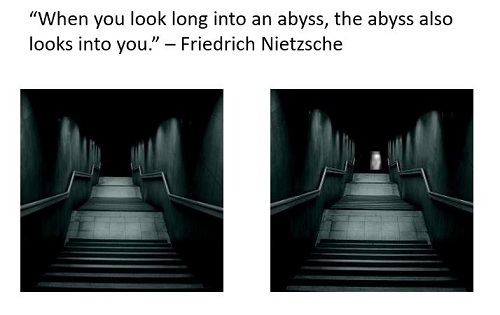We fall into a trap when we overlook problems. Have you ever had an uncomfortable feeling when you just knew what you were doing conflicts with what you know you should be doing? This is called cognitive dissonance and we have all had this feeling. Yet, cognitive dissonance can be a powerful motivator for changing your behavior. Think of the need for exercise. People will find all kinds of excuses to explain away their unhealthy habit of not exercising. Yet, they know they should be doing it. At some point, this uncomfortable feeling may assist them in changing their behavior, but they need a method to help them change.
Developing an Alternative Future
We must strive to fix problems by analyzing potential causes. This brings to mind a quote from Helen Keller as often times we fail to see what is right in front of us. One such method we can use to assist us is a futures research method focusing on in-depth analysis of current problems called Causal Layer Analysis (CLA). CLA was developed by Sohail Inayatullah and provides us a way to develop alternative futures. [1] So, what exactly is CLA and how can we use it? To answer this, let’s look at how we can use it to move past assumptions and biases in developing alternative futures for a problem.
How Causal Layer Analysis Makes the Invisible Visible
CLA possesses 4 dimensions; where dimensions 1 and 2 are the most visible and dimensions 3 and 4 are deeper (less visible).[2]
Four Dimensions of CLA
Let’s take a look at how each dimension is framed, questions to ask for each, and an example of each. [3]
Dimension 1: Litany
Here we are defining the problem. This is our unquestioned view of reality. For example, I am a former foster child and active in research to improve the current state of the foster care system. Think of our earlier discussion on cognitive dissonance. Whenever the deep issues in foster care are discussed, people tend to shut down and fail to engage in conversation. Instead, they view the conversation as an attack. They know there has to be a better way (and that the system is failing), yet they stick with the model they are comfortable with. Questions to ask in this dimension:
What is the issue? How is the issue being reported in the media? What are the known facts? What is widely believed and not questioned?
Litany example: The foster care system is surrounded with a ‘litany’ of problems. The insane reality of the foster care system can be summed up through these 5 key points:[4]
Often times you are stuck in a bad situation (either with your biological family or in foster care). If you fail to “win the lottery” and get adopted by a good family, you could be stuck in a horrific life. Foster parents and the foster care system “may not” (notice how I said “may not”) have a childs best interest in mind. A child can be surrounded and literally changed by bad influences. Kids often disappear into the foster care system. Essentially, they are a life discarded. Children get stuck in a viscous cycle of failure.
Dimension 2: Systemic Causes
Here we are looking at the systemic analysis and conducting an audit of the causes to the problem. Systemic Causes example: The Kansas foster care system is privatized. Yet, the system is in a state of crisis as more and more children are entering the foster care system. The current solution is to spend more; however, there is a strong positive correlation between spending more and the increased number of children entering foster care. This could be due to the fact that the contract ceases payment to contractors once a child leaves the foster care system. [5] Furthermore, the more children ente ring the system creates a need for more foster parents, for which there is already a shortage. Questions to ask in this dimension:
What factors are influencing the issue? Who is involved? What are the underlying causes?
Let’s look at a tool we can use to help us in this dimension.
The Futures Wheel
The futures wheel can assist us in anticipating future issues. This also helps us create new possibilities by seeing the world from an unconnected to a complex connected reality. [6] Continuing with our foster care example, let’s look at the current problem and see what the future looks like if we fail to change. Let’s look at the consequences and what is causing the Litany to appear on the “surface” in its current form. Here’s an example of the futures wheel:[7]
Dimension 3: Worldview
The Worldview is creating the present reality. Here we are looking at the current paradigms, cultures, and values. This includes the hidden societal values and structures that remain unquestioned. In this deeper layer, we are also looking at the values behind the ‘powers’ or influencers that perpetuate the litany. [8] Questions to ask in this dimension:
What are the hidden assumptions? Who are the stakeholders? Who has the majority of control over the issue? What are the dominant views and ideologies of the ‘powers’ for this issue?
Worldview example: There are a large number of stakeholders in the foster care system and they all have different views and ideologies. However, it is apparent that the current foster care paradigm needs shattered. We all recognize the foster care system is failing, yet, the current Worldview is we assume people will always do what is in the best interest of a child.
Dimension 4: Myth or Metaphor
Moving to the deepest layer of CLA is the Myth or Metaphor dimension. Here we are looking at the images that come to mind when we think of an issue and the gut or emotional responses the issue evokes. Questions to ask in this dimension: 1) What encapsulates the feelings in which this Worldview is grounded? 2) What myths or folk stories come to mind? 3) What metaphors come to mind? Myth or Metaphor example:
The Allegory of the Cave presented by Greek philosopher Plato is a perfect comparison to the world of a foster child. This example would take up an entire article in itself. I recommend the following video if you are interested in learning more on this topic: The Cave A child in foster care is like a stray puzzle piece. [9] Foster care is like never-ending rain that turns a river into a raging torrent, sweeping away everything in its path.
So, what should we do now?
Create alternative futures with the end in mind
After you complete your CLA, the next thing you must do is choose a different myth, metaphor, or narrative and create new (alternative) futures moving back up through the same dimensions. Flip the current system or paradigm on its head! Let’s stick with the river metaphor and create a new reality for foster children. Foster care is like a never-ending rain that turns a river into a raging torrent, sweeping away everything in its path. Let’s imagine what would happen if a foster child broke the cycle of failure… what if the rain stopped? When the rain finally stops and the flood subsides, the old growth has gone and there’s new fertile land waiting to be farmed.[10] To help us imagine this, let’s use a powerful tool called Backcasting.
Move Backwards From Your Vision to the Present
Backcasting is a navigational tool we can use to solve difficult or “Wicked” problems. With Backcasting, we start with the end in mind, where multiple paths exist. Another way to think of it is to think of scouting ahead. Let’s see what it looks like and walk through an example. [11]
Steps in Backcasting
Step #1: Set the timeframe. Step #2: List how the problem is currently functioning by using your current CLA. Step #3: Define possible future states, for which I identified three. Complete a Future Wheel for each of these alternative future states. Step #4: Work backwards identifying actions and indicators. Step #5: Assess risks and opportunities. Backcasting is an extremely powerful tool as we can begin with the desired end state and work backwards uncovering (previously) hidden strategies to produce phenomenal transformation. It’s amazing the potential that exists if we would use these powerful approaches. CLA, Future Wheels, and Backcasting provide us an opportunity to radically improve any problem placed in front of us.
When developing a solution to a problem, we cannot simply look at a single cause and effect relationship. This is not nearly dynamic enough. If we do this, we will overlook a problem. So, we must learn to find a problems blindspot. Lastly, I am reminded of a famous quote by Friedrich Nietzsche,
